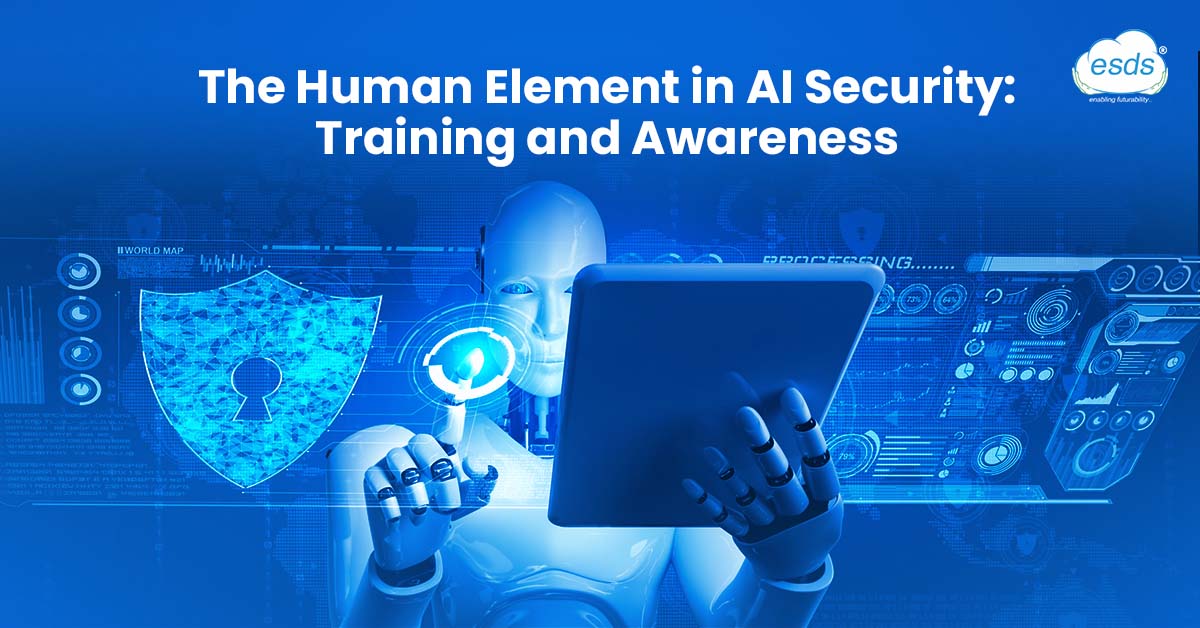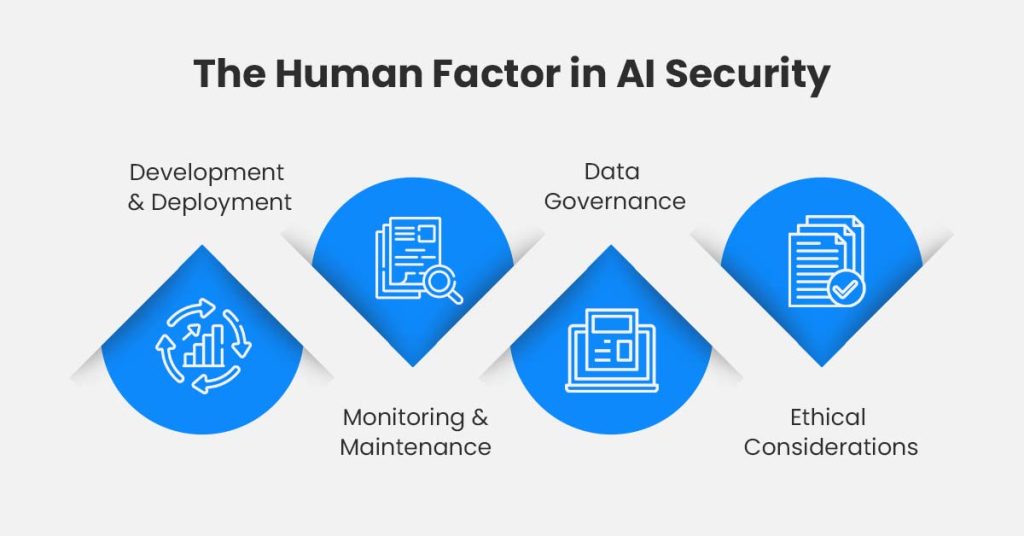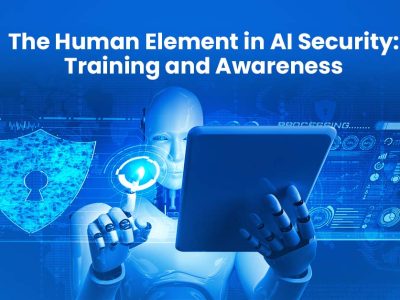The Human Element in AI Security: Training and Awareness

The integration of artificial intelligence (AI) into various aspects of our lives has become almost ubiquitous. From virtual assistants like Siri and Alexa to complex machine learning algorithms that power recommendation systems, AI is profoundly shaping our world. However, with this rapid advancement in AI technology comes the pressing need to address the human element in AI security. Training and awareness are vital to safeguarding our digital ecosystems against emerging threats.
What is AI Security?
The term “AI security” describes the precautions that can be taken to safeguard AI systems from cyberattacks, data breaches, and other security risks. Strong security measures are now more necessary than ever to protect AI systems as they become more common in households and enterprises.

Security tests for AI systems should be performed in three dimensions:
Software level: You must perform traditional code analysis, look at programming flaws, and carry out routine security audits to make sure your AI software is secure.
Learning level: AI alone has learning-level vulnerabilities. You must safeguard the databases, manage the type of data that is sent there, and keep an eye out for unexpected model behaviour.
Distributed level: If the AI model consists of numerous parts that each perform their own task before merging the findings for the ultimate judgement, you must ensure that the system functions properly in each case.
Understanding the AI Security Landscape

Before delving into the importance of training and awareness, it’s crucial to comprehend the AI security landscape. AI systems are susceptible to vulnerabilities and attacks like any other technology. These threats can range from data breaches and adversarial attacks to bias and fairness issues in AI decision-making.
To mitigate these risks, organizations need robust AI security measures in place. This includes encryption, access controls, and continuous monitoring. However, the role of humans in identifying and responding to AI-related security challenges is equally vital.
The Human Factor in AI Security
While AI systems are designed to operate autonomously, humans ultimately create and manage them. This human involvement introduces a critical layer of responsibility regarding AI security.

- Development and Deployment: AI systems are developed, programmed, and deployed by humans. Malicious actors can exploit any flaws or vulnerabilities in the initial coding. Therefore, AI developers must receive comprehensive training in secure coding practices and be aware of potential security pitfalls.
- Monitoring and Maintenance: AI systems require ongoing monitoring and maintenance after deployment. This involves human oversight to ensure that the AI functions as intended and to detect any anomalies or suspicious activities. Human vigilance is essential in identifying and responding to emerging threats promptly.
- Data Governance: Data is the lifeblood of AI. Humans are responsible for collecting, storing, and managing the data used to train AI models. Data breaches and privacy violations can have far-reaching consequences. Therefore, individuals involved in data handling must be well-versed in data security and privacy regulations.
- Ethical Considerations: AI systems can inherit biases from their training data, leading to unfair or discriminatory outcomes. Humans play a pivotal role in identifying and rectifying these biases. Ethical awareness and responsible AI development are imperative to ensure fairness and equity.
The Role of Training
Effective training is fundamental to addressing the human element in AI security. It equips individuals with the knowledge and skills needed to:
- Identify potential AI security risks and vulnerabilities.
- Implement security best practices during AI development and deployment.
- Recognize and respond to security incidents promptly.
- Uphold ethical standards in AI design and usage.
- Navigate complex data governance and privacy regulations.
Training programs should cater to stakeholders, including AI developers, data scientists, system administrators, and end-users. These programs should be dynamic and updated regularly to keep pace with evolving AI threats.
Raising Awareness
In addition to formal training, raising awareness about AI security is crucial. Many security breaches occur due to human error or lack of awareness. Organizations should:
- Conduct regular AI security awareness campaigns.
- Promote a culture of security within the organization.
- Encourage reporting of security incidents and near-misses.
- Share real-world examples of AI-related security challenges and their consequences.
Awareness efforts should also extend to the broader community, including consumers and the general public. Understanding the risks associated with AI technologies empowers individuals to make informed choices and demand responsible AI practices from organizations.
Conclusion
In the age of AI, the human element in security cannot be overstated. While AI systems can bolster our defenses, they are not immune to vulnerabilities, and humans are integral to securing them. Through comprehensive training and awareness initiatives, we can equip individuals with the knowledge and mindset needed to navigate the complex landscape of AI security effectively. By doing so, we can harness the power of AI while safeguarding our digital world against emerging threats.
- Decoding Generative AI: A Comprehensive Guide to Gartner’s Impact Radar - January 2, 2024
- 5 Best Practices for Cloud Security in 2024 - December 29, 2023
- 10 Best Machine Learning Ops Strategies for Cloud Environments in 2024 - December 29, 2023
